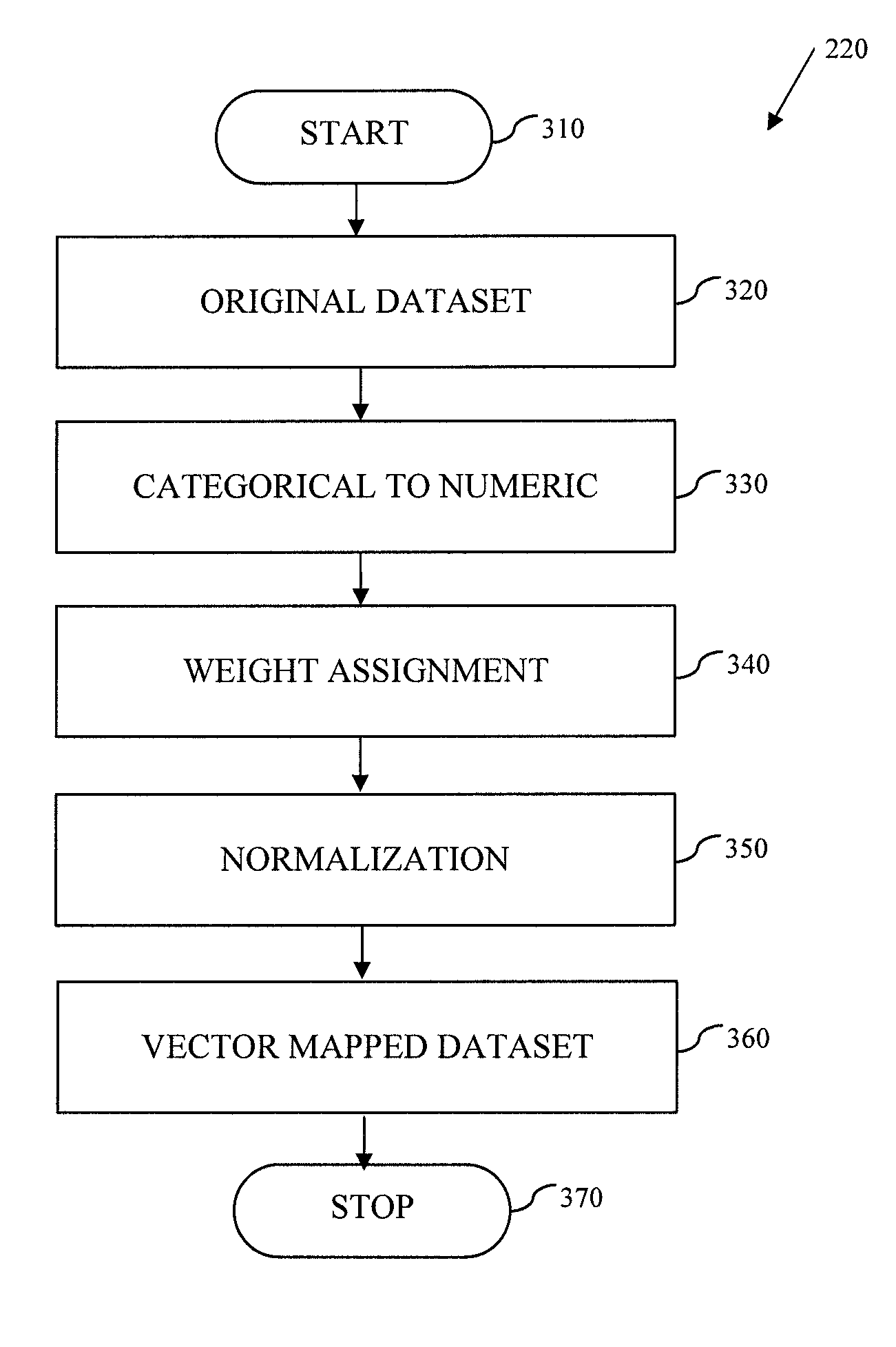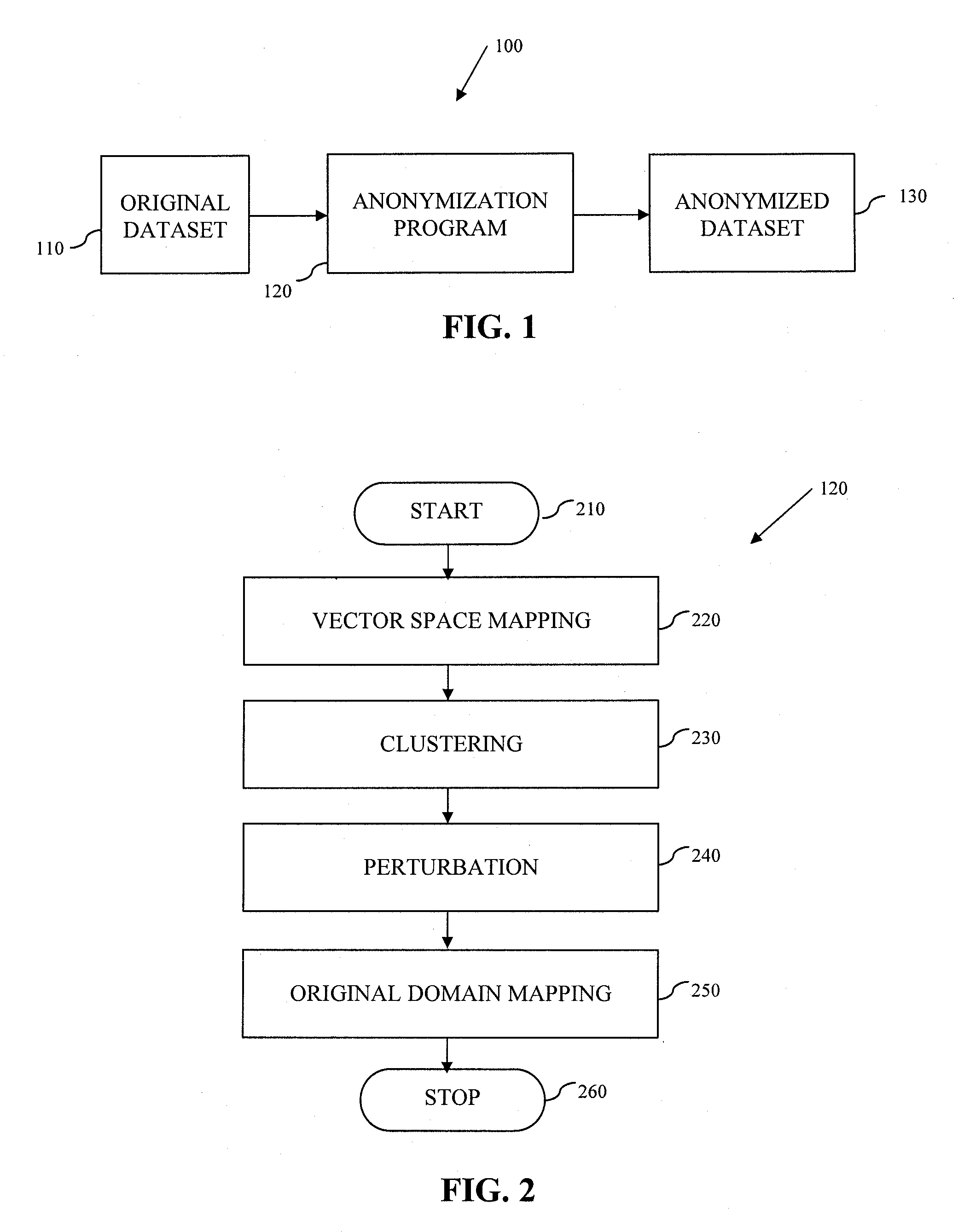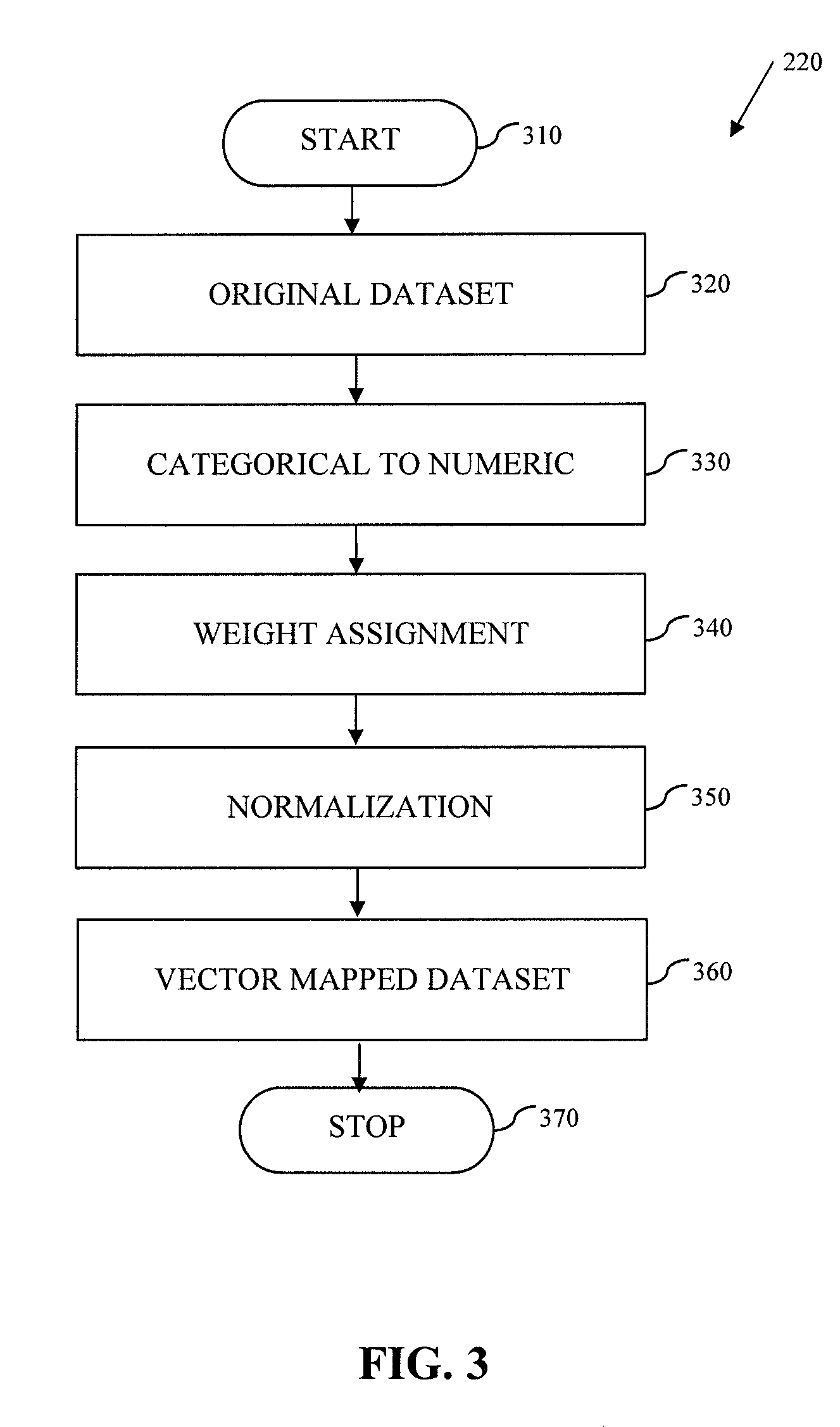System and method for data anonymization using hierarchical data clustering and perturbation
a hierarchical data and clustering technology, applied in the field of data anonymization, can solve the problems of l-diversity, l-diversity has a number of limitations, and is neither necessary nor sufficient to prevent attribute disclosure, and achieves k-anonymity by generalization in the case of high-dimensional datasets
- Summary
- Abstract
- Description
- Claims
- Application Information
AI Technical Summary
Problems solved by technology
Method used
Image
Examples
first embodiment
[0031]FIG. 6 is a diagram illustrating a first anonymized dataset 600 obtained after applying the perturbation step 240 of FIG. 2 on the dataset 500 of FIG. 5. This embodiment can be referred to as an “assign” method. The assign method achieves k-anonymity in a k-sized cluster (here, 4-sized) by randomly assigning the attribute value of one record to all the records in that cluster. For example, the first cluster 510 of FIG. 5 is converted to an anonymized cluster 610 by assigning the circled values in the first cluster 510 to all the records of the first cluster, resulting in the first anonymized cluster 610. This is done for quasi-identifiers, which are the set of attributes that can be linked with external datasets to identify individuals. In the current example, zip code, age, and nationality are quasi-identifiers, while disease is a sensitive attribute. Similarly, the second and third clusters 520, 530 of FIG. 5 are converted to second and third anonymized clusters 620, 630 of ...
second embodiment
[0032]FIG. 7 is a diagram illustrating a second anonymized dataset 700 obtained after applying the perturbation step 240 of FIG. 2 on the dataset 500 of FIG. 5. This embodiment can be referred to as a “shuffle” method. In the shuffle method, the values of an attribute are shuffled among the records in each k-sized cluster (here, 4-sized) by a random permutation. For example, the first cluster 510 is converted to a first anonymized cluster 710 by randomly shuffling the record values among each other. The shuffling is done only for quasi-identifiers, as in the case of assign method, described above. Similarly, the second and third clusters 520, 530 of FIG. 5 are converted to second and third anonymized clusters 720, 730 of FIG. 7. While this second method does not achieve k-anonymity, it is still advantageous for at least two reasons. First, it does not change the attribute-wise statistical distributions of data within each cluster; and second, it preserves the statistical relationshi...
PUM
 Login to View More
Login to View More Abstract
Description
Claims
Application Information
 Login to View More
Login to View More - R&D
- Intellectual Property
- Life Sciences
- Materials
- Tech Scout
- Unparalleled Data Quality
- Higher Quality Content
- 60% Fewer Hallucinations
Browse by: Latest US Patents, China's latest patents, Technical Efficacy Thesaurus, Application Domain, Technology Topic, Popular Technical Reports.
© 2025 PatSnap. All rights reserved.Legal|Privacy policy|Modern Slavery Act Transparency Statement|Sitemap|About US| Contact US: help@patsnap.com



